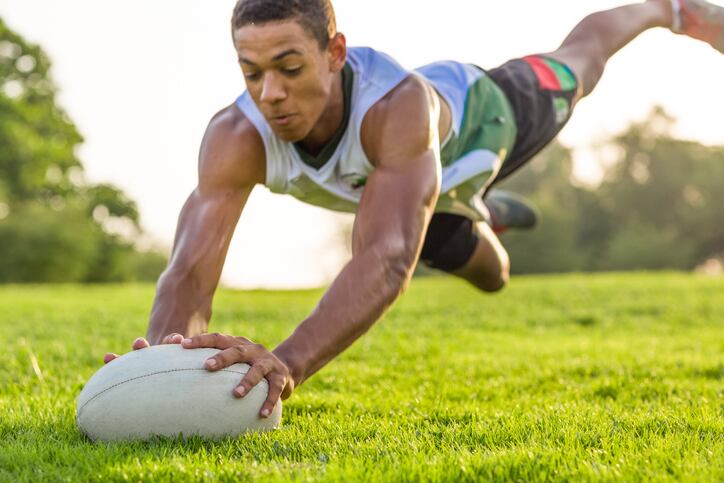The study, published in the journal Nutrients, is the first to examine the association between energy availability (EA) and sleep as measured via ambulatory polysomnography (PSG) in adolescent athletes.
According to a recent state by the International Olympic Committee Consensus Statement on relative energy deficiency in sports (REDs), decreased sleep quality may be an indicator associated with low energy availability (LEA). However, a limited number of studies have examined the relationship between LEA and sleep, those results are inconsistent, and no studies have previously focused on EA and sleep in young athletes.
The findings of the new study suggests a threshold of LEA at 23 kcal per kg fat free mass (FFM) per day in adolescent athletes, below which sleep quality deteriorates dramatically.
"The fact that low energy availability (LEA) is associated with sleep disturbances underscores the importance for athletic administrators, nutritionists and coaches to be aware of its potential impact on sleep quality, particularly during periods of intense training," the study concluded.
"Given the significant role of sleep in athletic performance and overall well-being, proactive measures should be taken to monitor and mitigate the effects of LEA on athletes’ sleep patterns."
Speaking about the study's findings, Dan Richardson, a performance nutritionist and lead nutritionist for Youth Sport Nutrition, said this a prominent issue amongst a lot of young athletes, not just rugby players face.
"Sleep quality is paramount for young athletes' physical and mental well-being and performance," he told NutraIngredients. "Adequate sleep supports muscle repair, hormone regulation, cognitive function, and emotional stability.
"In most clubs I work within we don’t have a ’sleep specialist’ and it often fall on the nutritionist feet as food and sleep have a strong connection."
He added: "Prioritising both nutrition and sleep hygiene is essential for supporting young athletes' overall health, well-being, and long-term athletic success."
Restorative sleep in young athletes
Restorative sleep is considered the gold standard strategy for recovery after training and competitions. However, inconsistent sleep schedules, insufficient sleep duration and poor sleep quality are prevalent problems among team sports athletes, particularly younger ones.
Although sleep studies have focused on sport-related factors such as training, competition and travel, few studies have attempted to examine how energy status influences athletes’ sleep.
Although studies have been unable to determine optimal EA in athletes, EA of at least 45 kcal/kg FFM/day for sedentary eumenorrheic normal weight women (Loucks, 2014) and 40 kcal/kg FFM/day for exercising men (Koehler et al., 2016) appears to be a threshold to ensure optimal EA for physiological functions.
It is well established that dietary requirements for energy, macronutrients and micronutrients increase during adolescence due to the demands of growth and development processes. What's more, several studies have reported that athletes competing in team sports, including rugby, often fail to meet recommended dietary guidelines for their sport and activity level.
The aim of the current study was to investigate the relationship between EA status and sleep quality measured via ambulatory PSG under a fixed time spent in bed among young rugby players with the hypothesis that an LEA state might have a negative impact on sleep parameters.
Measuring LEA and sleep
The study recruited 42 male adolescent rugby players engaged in the under-18 national categories. At baseline, the participants were assessed for anthropometric and body composition and took part in habituation night sleeping with the portable sleep devices (Sleep Profiler, Advanced Brain Monitoring, Carlsbad, USA).
Then, they participated in a seven day follow-up at their training centre (Montferrand Sports Association-Rugby Section, Clermont Ferrand, France) as well as their respective boarding school (habitual sleep environment) during which time their exercise energy expenditure was analysed.
Participants were instructed to consume food at will in their habitual catering facilities (school and training centre canteens). All foods were weighed by the investigators before and after consumption using an electronic food scale. Consumption of caffeinated beverages was not permitted after noon, and participants were asked to refrain from using any electronic media in the evening.
During the last night of the follow-up, they slept with sleep devices. The ambulatory PSG (Sleep Profiler PSG2, Advanced Brain Monitoring, Carlsbad, CA, USA) was used to measure total sleep time (TST), sleep onset latency (SOL), wake up after sleep (WASO), sleep efficiency (SE), awakenings longer than 30 seconds, awakenings longer than 90 seconds, arousal index and sleep architecture (N1, N2, N3 and REM sleep).
EA was calculated as the amount of dietary energy remaining after exercise energy expenditure, normalized to fat-free mass.
The resulting data indicated nearly half of the participants (47.6%) were in LEA (EA levels below 30 kcal per kg of fat free mass per day) during the intensive training phase (15 h/week). These results are in line with previous cross-sectional studies that have reported that low energy availability (LEA) is a widespread phenomenon in young male athletes.
The major result of the study was that the LEA group showed higher awakenings compared to the OEA group when given the same opportunity for sleep. These results suggest that EA might be directly related to sleep quality.
Noting limitations of the study, the authors pointed out the potential underestimation of energy expenditure when using accelerometry, particularly in a sports context such as rugby. They suggested that subsequent research may benefit from employing the doubly labelled water (DLW) method for a more precise assessment of this parameter.
They added that future studies should investigate appetite sensation and hormonal markers, such as leptin, ghrelin, orexin, etc., to confirm the mechanisms at play.
"Collaboration among stakeholders in athlete support networks is essential to implement tailored interventions and strategies to optimize both energy availability and sleep quality, ultimately improving athletes’ overall health and performance outcomes," the study concluded.
Source: Nutrients
doi: 10.3390/nu16050609
"Association between Low Energy Availability (LEA) and Impaired Sleep Quality in Young Rugby Players"
Authors: Oussama Saidi et al.


